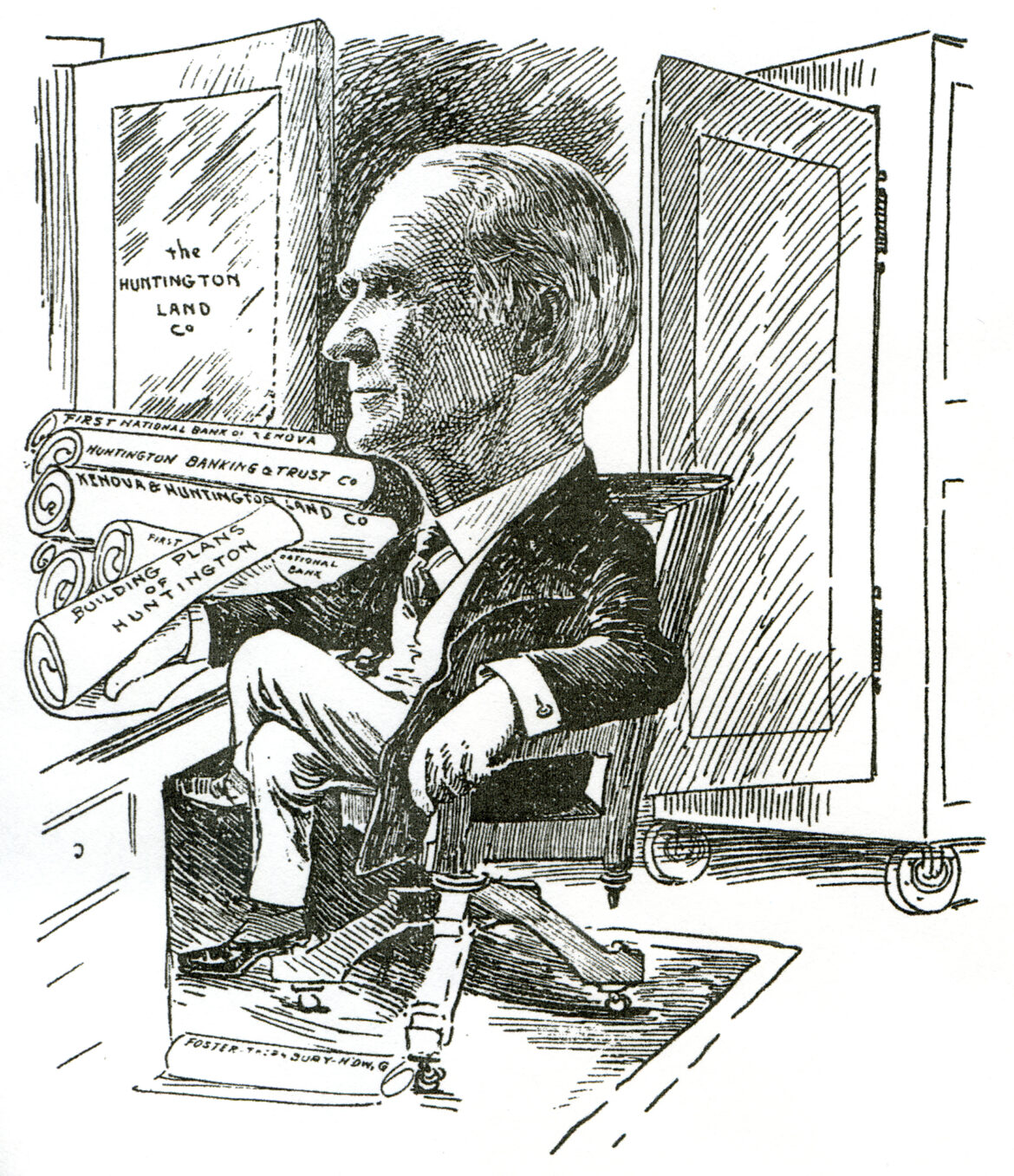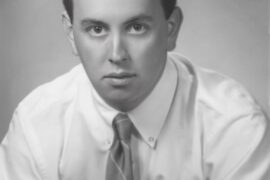By James E. Casto
HQ 63 | AUTUMN 2007
Bradley W. Foster was one of those who arrived in Huntington in 1871, the year it was born, and prospered with the city’s growth. Until his death in 1922, Foster was one of Huntington’s most respected business and civic leaders. And even today, decades later, his positive influence is still felt: The Woodlands retirement community is a legacy of his remarkable generosity.
In reporting Foster’s death, The Herald-Dispatch remarked on the helping hand he extended to many fledgling businesses: “He believed that it was his duty as a citizen of Huntington to encourage business activities on the part of people newly come to Huntington by extending them financial assistance. He practiced this belief. Not a few successful men of Huntington owe their start to this confidence in his fellows and in his city.”
Foster was born in 1834 in Winslow, Maine. In 1868, in Oneonta, N.Y., he married Mary Lenora Huntington, a niece of Collis P. Huntington, the rail tycoon who founded the city of Huntington as the western terminus of his Chesapeake & Ohio Railway. Three years later, the young couple moved to Huntington.
Arriving in the new town, Foster bought a plot of land on the southwest corner of 3rd Avenue and 9th Street. There he built a small two-story frame building that housed one of the city’s first hardware stores. The venture was an immediate success, and in the 1890s the frame building came down and was replaced by a handsome three-story brick structure. The brick building would later house one of the city’s best-known retailers, first named the Huntington Dry Goods Co. and later renamed The Huntington Store. Today, the Marshall Hall of Fame Café occupies the building’s first floor, with offices on the second and third.
In 1906, the B.W. Foster Hardware Co. moved to new quarters at 2nd Avenue and 12th Street, and 10 years later a merger created the Foster-Thornburg Hardware Co., a major regional wholesale supplier of hardware, furniture, plumbing and electrical supplies, and appliances. The business ceased operation in 1965.
Had he done nothing else, Foster’s name would stand out in the history of the city’s first half century. But he by no means confined his activities to the hardware business.
Foster was president of the Huntington Land Co., the successor to Collis P. Huntington’s original Central Land Co., which owned vast holdings in the city – all the property that wasn’t subdivided and sold in the city’s first years. Under Foster, the company sold the land on which thousands of Huntingtonians built their homes and businesses.
He was one of the founders of the First National Bank, which became the First Huntington National Bank, for many years the city’s largest. A member of City Council, he served on a committee to establish the city’s first hospital and was an organizer of what is today the Huntington Regional Chamber of Commerce. The Chamber’s first office was a room in his hardware store.
The Fosters built themselves a handsome home on the southwest corner of 5th Avenue and 11th Street. Today, the site is occupied by Huntington Federal Savings and Loan.
Mary Foster died in 1920, and two years later, on March 22, 1922, Bradley Foster died in Florida, where he had gone to recuperate from a bout of ill health. Friend and business partner E. H. Thornburg, who was with him at his time, told The Herald-Dispatch that Foster’s last wish “was that he might return to Huntington to die.”
That wish went un-granted. Instead his body was brought back to Huntington on the C&O and his funeral conducted at the First Presbyterian Church, where he and his late wife had been long-time members. He was then laid to rest alongside her in a mausoleum at Spring Hill Cemetery.
Foster left an estate of nearly $1 million – a sum equivalent to many millions in today’s dollars.
The Fosters had no children, and even before his death he had let it be known that he intended to leave the bulk of his estate to charity. But not even his closest friends and associates were prepared for the spectacular nature of his bequest – an endowment of $800,000 to build, maintain and operate a home for unmarried women and widows over the age of 65. Foster envisioned the Foster Memorial Home for Aged Women as a tribute to his late wife. He created the Foster Foundation to build and operate the home, and named six of his friends to the foundation’s board – D.E. Abbott, E.H. Thornburg, Robert L. Archer, C.P. Snow, Rufus Switzer and Hans Watts.
The board members immediately set to work, retaining prominent local architect Sidney L. Day to design the home. A block-long site was chosen on Madison Avenue between W. 7th and W. 8th streets, and Day visited similar homes in several other cities to gather ideas before finishing his plans.
Day’s magnificent handiwork – a three-story brick Georgian Revival mansion that cost $250,000 to build – welcomed its first residents in 1924 and over the coming years would shelter thousands of local women.
But times change. And beginning in the 1980s, board members of the Foster Foundation began talking about the growing need for adequate housing for all seniors – not just the women who long had been the residents of Foster Memorial. Meeting that need would require a bold step by the foundation.
The foundation proved equal to the challenge, and the result was construction of the Woodlands, a sprawling retirement community located on 170 acres of land just off 5th Street Road near its interchange with Interstate 64. The facility boasts 300,000 square feet of floor space and is valued at more than $30 million. A staff of more than 100 employees sees to the needs of the residents, who live in modern one and two-bedroom apartments and larger “cottages” scattered on the site.
In 1999, the Foster Memorial Home was closed and sold to a new owner, who converted it for operation as a personal care home. The facility was given a new name, Regency Park. But the name “Foster” by no means disappeared. The Woodlands retirement community is located at 1 Bradley W. Foster Drive – an appropriate choice for a street name given that it was the generous and community-minded Foster who planted the original seed that made it all possible.





